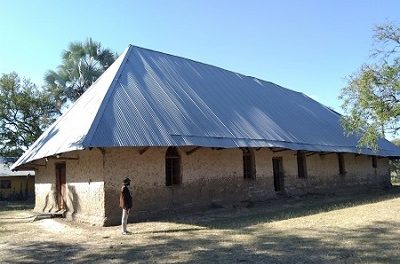
Understanding the Context of Pensions in Namibia in 2023
By Carmen Forster /
Earlier this year, I wrote an article that highlighted how retirement benefits are provided for in Namibia under Pillar 0 of the World Bank Model for Pension Provision.
In this article, we will consider Pillar 2.
| World Bank | Description |
| Pillar 0 | Non-contributory social protection/poverty alleviation that provides for a minimum level of benefit. |
| Pillar 1 | Contributory national social security retirement fund that seeks to replace a portion of income. This is usually sponsored by the state. |
| Pillar 2 | Mandatory retirement provision, usually through employer-sponsored scheme/fund and is usually managed by the private sector. |
| Pillar 3 | Voluntary additional retirement savings that are usually flexible and discretionary in nature. |
| Pillar 4 | Informal intra-family or inter-generational of both financial and non-financial support to the elderly. |
Pillar 2
Occupational retirement funds have been part of the Namibian financial sector for more than 50 years. Although it is not a mandatory requirement, many Namibian companies either sponsor or participate in a retirement fund on behalf of their employees. Retirement fund benefits are often considered to be an important part of the package that is offered to staff.
Several African countries have started to pursue the compulsory establishment of occupational pension schemes to enhance retirement savings benefits accrued under other Pillars. Examples of countries that are exploring this option are Ghana, Zambia, and Nigeria.
Tax incentives
The Namibian government has sought to encourage the provision of retirement benefits by offering tax incentives to employers and employees. These include:
– Tax deductibility of employer and employee contributions to retirement funds;
– No tax levied on returns earned by retirement funds; and
– Only two-thirds of the benefit payable on retirement is taxed.
If these tax incentives were to be quantified, the value would not be insignificant.
Legislation
Namibian retirement funds are currently regulated by the Pension Funds Act, Act No. 24 of 1956 (the PFA). This is legislation that we inherited from South Africa and no amendments have been made to the PFA since Namibia’s independence in 1990. The PFA will, however, be replaced by the Financial Institutions and Market Act, Act No. 2 of 2021 (FIMA) that will allow for key amendments, including legislative updates in recognition of retirement fund industry developments over the past 33 years, moving from a rule-based to a risk-based regulatory environment and providing the Namibian Financial Institutions and Markets Authority (NAMFISA) with more supervisory and regulatory powers.
Another Act that is of importance to retirement funds is the Income Tax Act, Act No 24 of 1981 (the ITA). The ITA outlines how retirement fund contributions, returns and benefits are to be taxed.
Reach and Effectiveness
Based on information sourced from NAMFISA, as of Q3 2022 the number of Namibian retirement fund members was 238 603. Of these, 94 291 were members of the Government Institutions Pension Fund (GIPF). This number is higher than expected considering our high unemployment rate, large informal sector, and the fact that occupational pension schemes are not mandatory in Namibia. It seems, therefore, that there may be some double counting of members in the NAMFISA figures.
South Africa and Botswana estimate that approximately 60% of their formal sectors are covered by retirement funds. This is likely to be the situation for Namibia as well.
Despite being a long-standing and well-run industry, the effectiveness of Pillar 2 retirement provision in Namibia is curtailed largely due to the lack of compulsory preservation.
Compulsory Preservation
Namibia is one of few countries in the world that does not have compulsory preservation rules for retirement savings. Unfortunately, this has supported the practice of members withdrawing benefits when changing jobs.
Approximately a year ago, the public was made aware of a draft FIMA regulation stipulating the requirement to preserve at least 75% of retirement savings when leaving a retirement fund. This legislation reflects the government’s intention to reduce the likelihood of retirement fund members being impoverished after retirement. The mandatory preservation requirement would allow for retirement savings to continue to grow with compound interest and provide for a higher income after retirement.
The draft mandatory preservation legislation has, however, met with opposition from many Namibians, who believe that it takes away their right to choose how to utilise their retirement benefits.
One of the concerns raised by critics of the proposed compulsory preservation regulation is that there is currently no social security net to support Namibians who lose their jobs. These employees depend on being able to access their retirement savings to support themselves and their families while they are unemployed.
We recently saw several countries allow members to have early access to their retirement fund savings to alleviate financial hardship arising from the Covid pandemic. Malaysia was one of the first countries to allow members of their compulsory national social security fund to access their benefits prior to retirement age.
In Africa, both Uganda and Zambia introduced similar interventions in 2022. Eswatini allowed emergency access to occupational retirement fund savings in 2020 while Malawi reduced the period required to be out of work before former members can claim part of their retirement savings from occupational retirement funds. Nigeria also increased accessibility to compulsory retirement savings while unemployed.
In South Africa, there is a plan to introduce the so-called ‘two pots’ pension system as of 1 March 2024. This will allow for one-third of future contributions to retirement funds to be payable to an accessible savings pot and the remaining two-thirds to be payable to a pot that is subject to compulsory preservation rules. The thinking is that it will provide a reasonable balance between accessibility and preservation requirements.
The draft FIMA compulsory preservation regulation has been withdrawn pending further consideration and consultation with the wider public.
Minimum Contributions
Even if a retirement fund member diligently preserves his/her retirement savings benefit, he/she will not be able to save enough to achieve a reasonable level of post-retirement income (around 75% of their pre-retirement salary) if the net contribution towards their retirement savings is less than 15% of their salary.
Some countries, such as Nigeria and Australia, have a minimum contribution towards retirement savings requirement. There is no indication that this will be introduced via FIMA.
Fees
The fees incurred by retirement funds detract from the growth in members’ retirement savings. Retirement fund trustees should ensure that fees charged for services rendered to the retirement fund are necessary and reasonable. Fees related to an increase in compliance requirements can prove to be challenging to manage effectively and we anticipate that FIMA will introduce additional compliance costs.
Investment returns
Another key contributor towards a good retirement outcome is the returns earned by the retirement fund. Retirement fund trustees are responsible for the investment of the retirement fund’s assets. When deciding on how to investment the assets, trustees need to bear in mind the following:
– The fiduciary responsibility that the trustees have towards the retirement fund’s members.
– The return earned on the assets should exceed inflation to ensure that the value of the members’ retirement savings is not eroded with time.
– The regulatory guidelines that place restrictions on the assets that they may invest in on behalf of the retirement fund.
– The importance of having a comprehensive and up-to-date investment policy in place.
– The need to source investment advice relative to the cost of doing so.
Regulation 13 of the PFA is the legislation that governs the way in which retirement fund assets are invested. The purpose of this legislation is to protect the retirement fund from unsound investments by limiting the fund’s exposure to certain assets. It also recognises the importance of retirement funds as investors in the Namibian economy by requiring a minimum investment in Namibian assets, including unlisted investments.
Trustees are likely to focus more on investments than the role that contributions and preservation play in building a sustainable post-retirement income. This is possibly due to the perception that this is the area over which the trustees have most control.
Members are carrying the full impact of investment risk related to their investments and they expect that the trustees will invest in such a manner as to achieve the highest possible returns for the lowest risk cost. This is easier said than done but certainly does not absolve the trustees from ensuring that they adopt sound investment principles and monitor their investment performance relative to these.
Food for thought
While there are some issues that need to be reviewed to improve on the reach and effectiveness of Namibian occupational retirement funds, it cannot be denied that these funds play a crucial role in our economy. We will continue to review the contribution made by these Pillar 2 pension provision entities in my next article.
– Carmen Forster is Head of Production Development & Client Retention (Corporate Segment), Old Mutual Namibia






